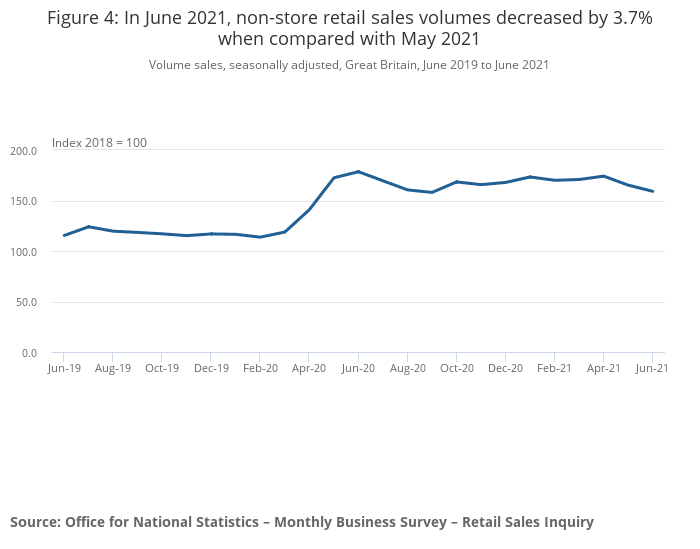Shopping through an ecommerce website is not always as efficient as it initially appears. Too often, the straightforward plan of easily finding, paying for and receiving a desired item is disturbed by experiences of unclear navigation, inaccurate product images, and cluttered web design.
Evidently, creating a site that is appealing both aesthetically and practically is not a simple task. This post highlights the most important attributes of a successful ecommerce website to ensure yours is as functional and attractive to visitors as possible.

Mobile Friendly
With mobile phones accounting for an estimated 60% of ecommerce website visits by the end of the year, ensuring your site is mobile friendly is essential.
It’s not all about making sure your website ‘works’. Creating a site that is easy to navigate on as many mobile devices as possible will maximise your potential customer base.
Keep in mind that mobile users often have different goals and expectations to desktop users. For example, it is likely that they will seek a faster experience, and so confirming that menu, checkout and breadcrumb buttons are easily available should be a priority. Remember that product images should still be visible on smaller screens.
Search Function
All ecommerce websites will need a competent search function for customers to find desired products. This should be made obvious (through the use of familiar icons or text prompting visitors to search) and stay in the same place on each page so it is easily located.
This function means customers do not have to wade through every available product to find a desired item. Incessant scrolling becomes tedious and the visitor will likely move on to a competitor offering a more efficient experience.
If your products are organised into categories, it also avoids confusion when a user is unsure which an item fits into.
But any serious ecommerce retailer will look to implement a more advanced search feature, that allows for instant product information, combats misspellings, and works fast.
Product Pictures
These are the first impressions a customer will have of what your store offers, so it is important that pictures are of high quality. It is worth hiring a professional photographer to ensure that products look as appealing as possible and fit the theme of your ecommerce website.
You should also include more than one angle of individual items where necessary. The visitor cannot look at the product as they usually would in a shop, and are more than likely interested in its appearance from various angles and perspectives. Including photographs from the front, back, sides, top and bottom of items where applicable helps the user to gain an understanding of the product and decide whether or not it is for them.
Product Reviews
Product reviews are a fairly daunting prospect. The idea of criticism putting off potential customers is a real concern for many businesses selling through an ecommerce website. But believe it or not, a few average or negative reviews can be beneficial. They prove to other customers that feedback is legitimate, thus elevating trust in the business. Unhappy comments are expected, and so should not be a massive issue if contrasted by plenty of positive ones.
Good reviews from customers can boost the appearance of a particular product, especially as opinions are from an unbiased source and so deemed more trustworthy.
Reviews also help gain feedback, allowing you to build on the things customers like about buying from you and alter those they don’t.
Filters
Categories can be extremely useful, whether a customer doesn’t know the name of a particular product or is just browsing. It avoids ceaseless scrolling through every product just to find what is needed.
Offering filters takes this a step further. While customers can browse categories with convenience, adding filters further simplifies the process by only displaying products fitting specific criteria. Aspects such as the price, colour, shape, or size of the item could be possible filters on your ecommerce website.
This means visitors can avoid searching through pages of products just to find the few that are relevant. It makes the shopping experience more efficient and therefore more desirable.
Coupons and Discounts
Coupons and discounts are not necessary, but definitely an added incentive for customers to buy from your site immediately. Including special offers on your site while visitors are browsing or making a purchase can prompt them to choose you over a competitor.
Not only does it keep them on your site, it also keeps them coming back to check for more deals and offers in the future.
Continually offering discounts can, of course, be damaging to your business. Still, they can be useful every now and then in directing more traffic to your site.
Recommended and Featured Products
Recommending products to customers based on what they buy or browse on your site is an effective way to increase sales. If a customer has purchased a dining table, why not offer some chairs to match? This strategy can prompt customers to purchase items they want but never would have thought to search. It also makes interactions with the website feel more personal.
Similarly, featuring relevant items on the home page of your site can encourage more sales. For example, an ecommerce website selling sports equipment may feature surfboards in the summer and skis in the winter, as this is when these products would be most likely to draw in customers. This way, products displayed on your website don’t always have to be tailored directly to every customer, but are probably still useful.
Help where necessary
Ensure that the information customers may need is readily available. Consider including a ‘FAQ’ page that can cover common queries about delivery, security and returns. This will save time and effort answering the same questions multiple times, and can be a place to refer new shoppers for help.
Confirm that contact links are prominent in case visitors have other questions. They often expect to find contact details in a ‘contact us’ page or footer, so putting them here will make them easily accessible to those who require help. Placing them near icons such as a telephone or envelope can also make them more distinctive to visitors on your site.
Other features you should consider including in your website are:
- Social media links
- Pages for new or popular products
- Emphasis on the security of your payment system
- An easy checkout process
- Fast loading times
- A clean design
- Detailed and accurate product descriptions
Of course, there are countless more elements that can improve your ecommerce website. Ultimately, it’s all about making the user experience of your site as coherent and enjoyable as possible. If customers can easily navigate your website, find products they may be interested in, then this all helps in boosting your sales and growing your business online.







